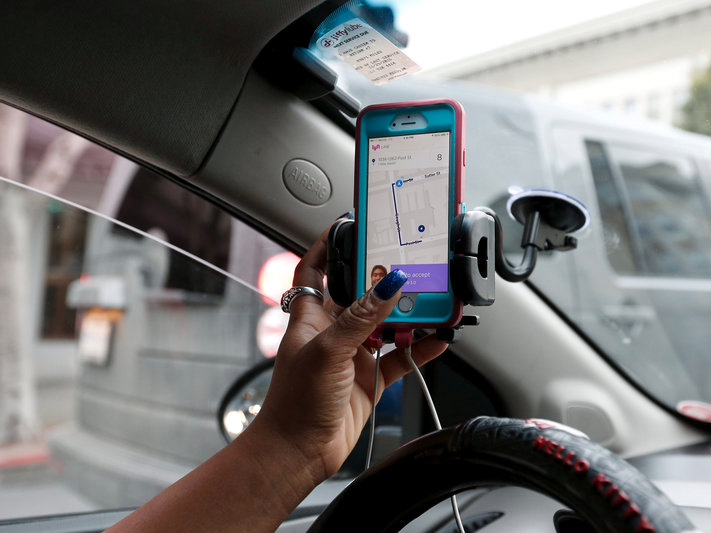• Experts say Uber’s brand has been severely damaged.
• The company’s attempt to shake up its management culture has not gone far enough to move consumers.
• Brand consultants are urging the ride-hailing firm to replace its CEO, Travis Kalanick.
It’s been a rough couple of months for Uber, and there may be no respite in sight.
On Tuesday, Uber released to its employees the results of an intensive, monthslong investigation, including recommendations for how the company could fix its image problems. Uber also limited some of the responsibilities of CEO Travis Kalanick, who announced he would take a leave of absence.
But the company’s response may be too little too late, branding experts said, and Uber’s spate of crises over the past few months – including allegations of sexual harassment and discrimination, concerns about privacy and data, and a leadership overhaul – may have permanently dented its brand.
Uber hasn’t responded to Business Insider’s request for comment.
"Reporting is one thing, making real change is another - Uber really has to blow itself up and start over if it has any shot at being a respectable brand that consumers trust and feel good about using," said Chris Allieri, the founder and principal of the public-relations firm Mulberry & Astor. "Kalanick on an indefinite leave of absence is a start, but termination would've sent a stronger signal that they're truly serious about making real changes."
Uber's brand is 'sinking'
An inflection point for the brand was former Uber employee Susan Fowler's blog post in February that alleged sexual harassment and discrimination at the company, said Matt Rizzetta, the CEO of the brand-communications agency North 6th Agency.
"After that point, it was either sink or swim, and unfortunately for Uber, it is sinking," he said.
"Their brand perception is absolutely terrible," said Cindy Gallop, the former chairwoman of the ad agency BBH and the founder and CEO of Make Love Not Porn. "Consumers today do not tolerate outrageously egregious behavior by brands just because the product delivers."
Since Fowler detailed her experience of a male supervisor soliciting her for sex, and human resources repeatedly shrugging off her concerns, Uber has continued on a downward spiral, making headlines for all the wrong reasons.
Amid several other reports of a sexist culture at Uber, the company's business ethics have also been brought into question. Not only did Uber try to secretly deceive authorities with its "Greyball" tool in some cities, according to The New York Times, but a former executive reportedly obtained the medical records of a rape victim in India.
All this has taken a toll on the brand.
"Behind the download trends, American consumer favorability of Uber has hit a record low, according to Morning Consult Brand Intelligence, a brand survey firm," MarketWatch reported on Tuesday. "Using a national sample of close to 40,000 US adults, the firm found that just 40% of the respondents had a favorable impression of Uber as of this week, the lowest that number has dropped since the survey began in 2016."

Blame it on the company's culture, said Erich Joachimsthaler, the founder and CEO of the brand consulting firm Vivaldi Group.
"All these instances may seem like isolated incidents, but they all have one common denominator," he said. "And that is its flawed culture, which starts at the top."
Uber shook up its leadership before the release of the report. Emil Michael, its chief fundraiser, resigned on Monday, and the company fired more than 20 people last week after a separate investigation into 215 complaints of sexual harassment, discrimination, and other bad behavior at the company. It also hired the Apple Music marketing executive Bozoma Saint John as its first chief brand officer.
But to tide over its brand crisis, observers said, it needs to show some serious commitment.
Uber needs to go much further
For Gallop, that means accepting moral responsibility and publicly apologizing to drivers, employees, board members, and consumers; being receptive to solutions and suggestions from staffers and customers on how to fix their culture; and, ultimately, pushing through a leadership overhaul.
"All of this needs to happen sequentially in order for them to demonstrate that they're seriously committed to change," she said. "They need to appoint a whole new leadership, which means firing and replacing Travis. But judging by the company meeting, the first step isn't happening, and we wait to see whether they make any request to the employees for the second step, which I'm willing to bet they won't."
Allieri echoed Gallop, calling for Kalanick to step down for good.
"Firing 20-plus senior employees is a start, but what about the CEO? He is a big part of the problem," he said. "He needs to go. He needs to go now. And not come back."
If Uber wants to pull a turnaround, it needs to treat its drivers better, Allieri said, as that would give it a first line of defense in that hundreds of thousands of brand loyalists could defend its moves. It would also help if it communicated to all its customers, via the app, the clear steps it's taking to overcome its problems. It should also launch an effort to help communities, not just market to them and do crisis communications, Allieri said.
"Above all, they need to grow up as a brand," he said.
Addressing its organizational mess would help the company turn its attention to bigger issues, Joachimsthaler said. Competition is heating up in terms of both ride-hailing and autonomous technology, and Uber's scrambling to deal with structural and cultural issues detracts from these objectives.
"All of this has been distracting the board from the real challenges they have, which is the competition and profitability," he said. "They have been left paralyzed."

